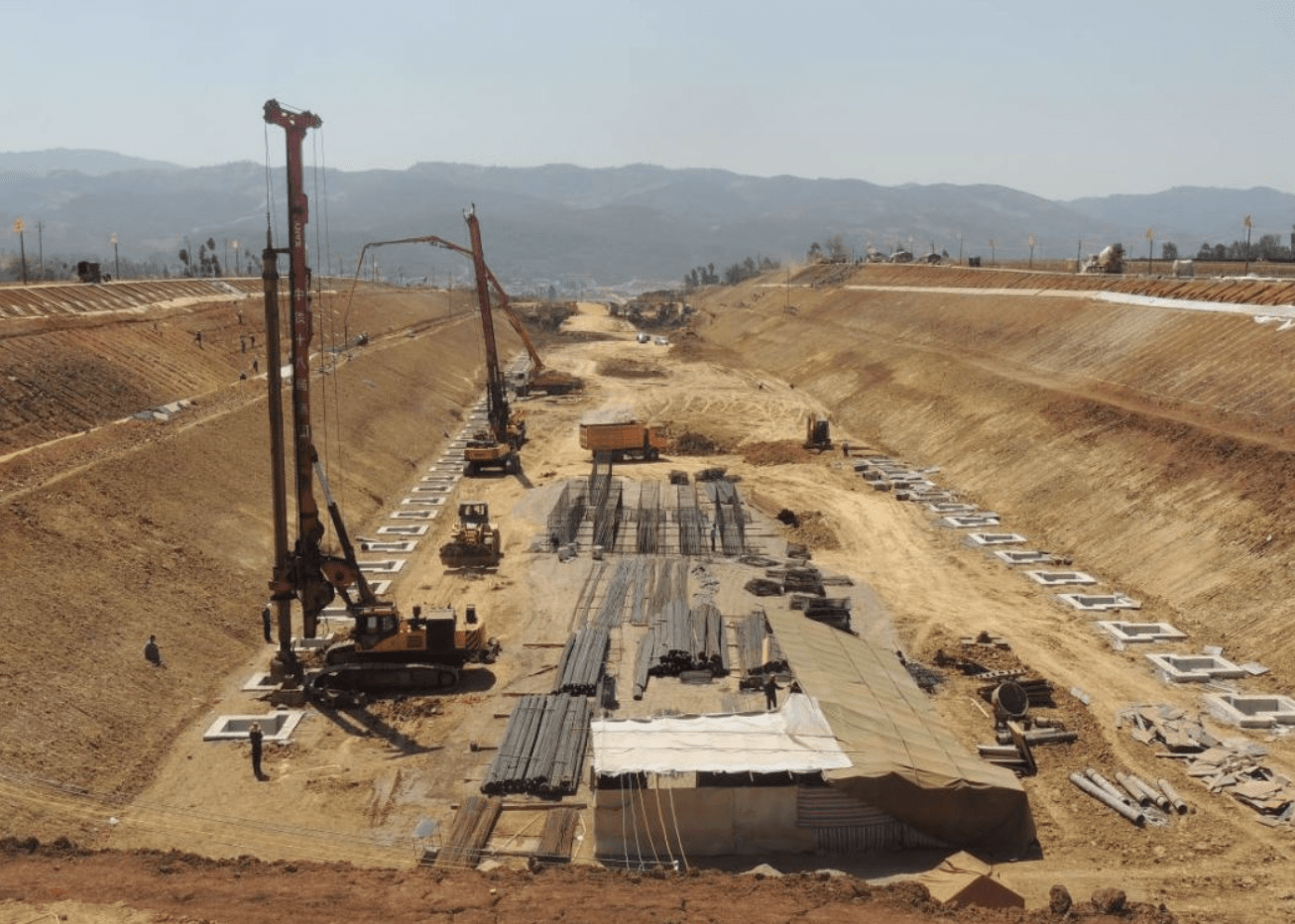Introduction
With the rapid development of infrastructure and the acceleration of highway and bridge construction, ensuring the quality of bridge pile foundations has become a critical concern. Pile foundation construction is a hidden engineering process that requires advanced technology, rich construction experience, and strict quality control to prevent accidents.
This article provides an in-depth analysis of bridge pile foundation construction, focusing on bored pile construction techniques, quality assurance measures, and common challenges.
Types of Bridge Pile Foundations
1. Classification by Load-Bearing Mechanism
-
End-Bearing Piles: Primarily rely on the bearing capacity of the rock layer at the pile tip.
-
Friction Piles: Depend on the vertical frictional resistance along the pile shaft.
2. Classification by Construction Method
-
Cast-in-Place Piles (Bored Piles): Formed by drilling a hole and filling it with reinforced concrete.
-
Driven Piles: Prefabricated piles hammered into the ground.
Bored Pile Construction Techniques
1. Drilling Methods
Bored piles are constructed by drilling a hole, placing a reinforcement cage, and pouring concrete. Depending on the excavation method, they can be categorized as:
-
Manual Excavation (Dug Piles)
-
Mechanical Drilling (Bored Piles)
Common Drilling Techniques:
-
Rotary Drilling (Dry Method):
-
Uses a rotating drill bit to excavate soil.
-
Suitable for clay, silt, sand, and soft soil layers.
-
Environmentally friendly (no slurry required).
-
-
Impact Drilling:
-
A heavy drill bit is repeatedly dropped to break rock.
-
Effective in clay, sand, and gravel layers.
-
-
Casing Drilling:
-
A steel casing prevents borehole collapse.
-
Ideal for unstable soil conditions.
-
-
Direct/Reverse Circulation Drilling:
-
Uses slurry to remove cuttings.
-
Reverse circulation is more efficient for debris removal.
-
Key Construction Processes
1. Steel Casing Installation
-
Diameter: 3.0m (thickness: 25mm).
-
Installation Steps:
-
Pre-drill a hole (temporary casing: φ3.4m).
-
Use an APE vibratory hammer to drive the casing to the design depth (-50m).
-
2. Reinforcement Cage Fabrication & Installation
-
Dimensions: 94.5m long, 150 tons.
-
Features:
-
Double-layer reinforcement (up to 240 bars per section).
-
Bottom-triggered switches ensure proper placement.
-
Grouting pipes (6 loops, 12 pipes) enhance pile base strength.
-
3. Drilling & Slurry Management
-
Equipment: KPG-3000 hydraulic drill, ZSD300/210 power head.
-
Slurry Composition:
-
Water, bentonite, clay, Na₂CO₃.
-
Key Properties: Density (1.1–1.3), viscosity (8–10s).
-
-
Reverse Circulation Drilling: Ensures efficient debris removal.
4. Concrete Pouring & Post-Grouting
-
Concrete Placement:
-
Tremie method (minimum 1.5m initial embedment).
-
Continuous pouring to avoid segregation.
-
-
Post-Grouting:
-
Purpose: Strengthens the pile base, reduces settlement.
-
Grout Mix: Cement, bentonite, water, retarder (7-day strength ≥5MPa).
-
Procedure:
-
Water pressure test (24–48 hrs after concreting).
-
Grout injection (10 days after concreting).
-
Cycle injection (100L per loop, max 2500L total).
-
-
Quality Control & Testing
1. Pile Integrity Testing
-
Ultrasonic Testing (UST):
-
Conducted 7 days after concreting.
-
Uses 6 embedded tubes to assess concrete quality.
-
2. Common Defects & Solutions
| Issue | Cause | Solution |
|---|---|---|
| Lack of coarse aggregate at the pile head | Excessive slump, long transport distance | Extend chiseling until normal concrete is found |
| 1m of sediment at the pile base | Incomplete cleaning, delayed concreting | Re-drill and reconstruct the pile |
| Pile breakage | Collapse due to weak casing support | Install a larger casing and reconstruct |
Conclusion
Bridge pile foundation construction requires precise techniques, strict quality control, and advanced testing methods to ensure structural integrity. By implementing proper drilling, reinforcement, concreting, and grouting procedures, engineers can minimize risks and enhance durability.


